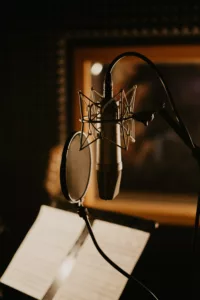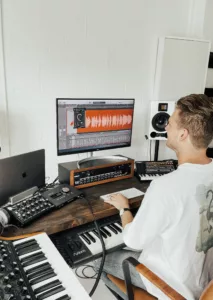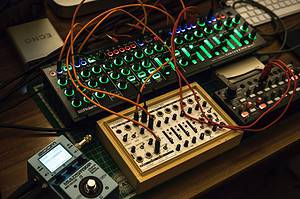Giving Musicians the Tools to Make Better Music
Analog vs. Digital Recording: Which Captures Music Better?
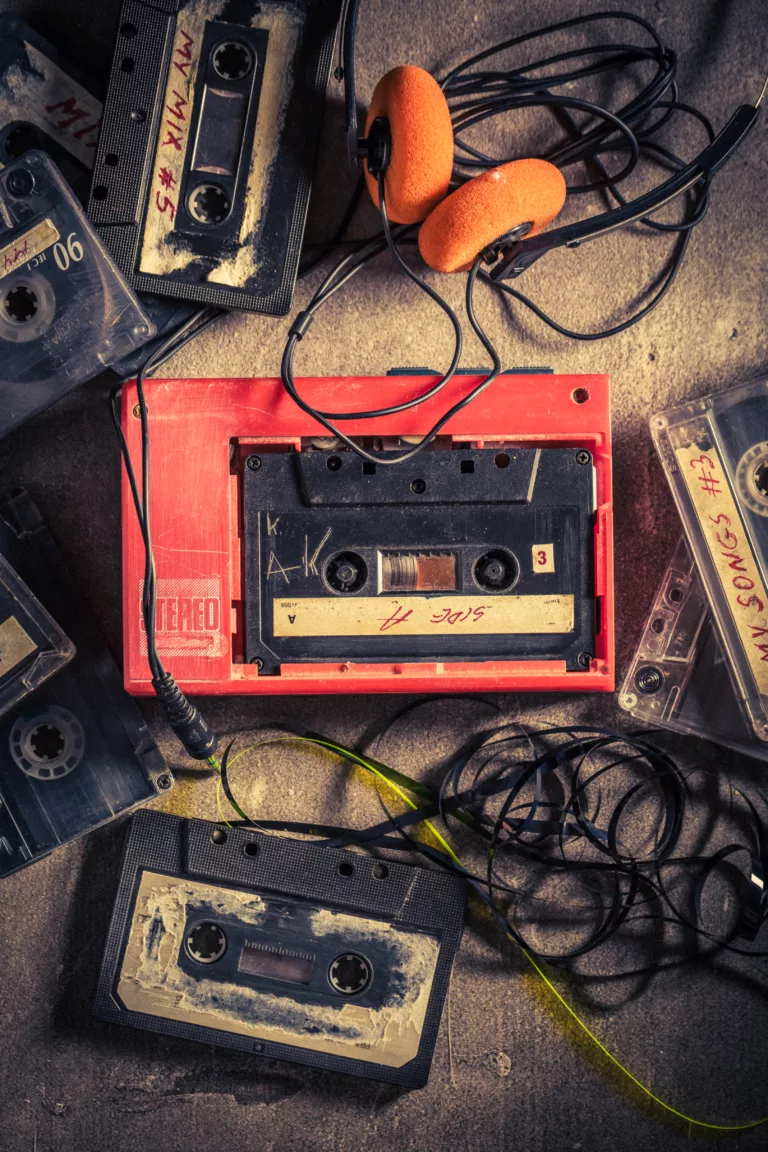
Hey you! Yeah, you—the one who’s been losing sleep over whether to dive into the vintage realm of analog recordings or embrace the millennial-chic world of digital. Sit down, grab a cup of coffee (or something stronger if that’s your jam), and listen up. We’re about to delve into one of the most riveting debates since Batman vs Superman—Analog vs Digital Recordings.
Now, whether you’re a budding bedroom producer or a veteran studio shark, choosing the right recording medium is like selecting a pet. Choose wrong, and you’re stuck with a noisy headache that chews through your cables. But choose right, and you’ve got a loyal companion that makes everything better.
So, what’s it gonna be? Analog with its warm, cozy vibes that make you feel like you’re wrapped in an aural blanket? Or digital, the slick, efficient companion that doesn’t spill, doesn’t spoil, and doesn’t talk back? Tough call, isn’t it?
Well, no worries. That’s what I’m here for. I’ll be your spirit guide on this magical journey into the nitty-gritty of sound. By the end, you’ll understand the nuances between these two recording methods and will be better equipped to make a game-changing decision for your music production setup. So let’s get this party started.
But hey, if you’re new to this whole Analog vs Digital showdown, maybe you’d like to start with the basics. Check out The Ultimate Showdown: Analog vs Digital Audio Explained for a primer.
Alright, on to the main event!
External Link: SoundOnSound Article on Analog vs Digital
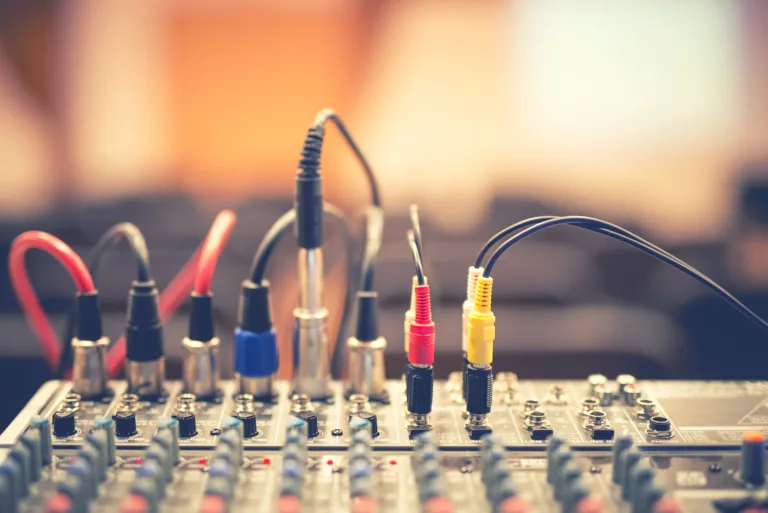
The World of Analog Recordings: Where Nostalgia Meets Reality
Ah, Analog Recordings. The granddaddy of the sound world. It’s like that vintage leather jacket your dad wore—oozing cool, a bit rough around the edges, but oh-so-comfortable.
What is Analog Recording?
Let’s start with the basics. Analog Recording captures sound waves in their most natural form and etches them onto a physical medium—be it vinyl, magnetic tape, or your ex’s mixtape. We’re talking actual, physical grooves or magnetic particles that capture the essence of the sound. Think of it as the ink-and-quill approach to capturing audio. It’s old school, baby, but it has its charm.
I mean, there’s something about dropping a needle on vinyl or hearing the hiss of a tape reel that sends shivers down the spine. It’s like catching a whiff of your grandma’s cooking—it immediately transports you to another time and place.
Here’s a good article from Reverb to feed your hunger for more on what analog recording is all about.
Pros of Analog Recording
Warm Sound: Imagine snuggling under a thick, woolen blanket with a cup of hot cocoa. That’s what analog sound is like. Warm, rich, full-bodied—like a fine wine or your grandma’s meatloaf. It’s a sound quality that digital has tried to emulate but hasn’t quite nailed.
Unique Tonal Characteristics: Analog adds certain harmonic distortions that many find pleasing. It’s like that grainy texture in vintage photographs—flawed but beautiful. It adds character, baby, character!
Immediate Tactile Experience: There’s something immensely satisfying about twiddling physical knobs and pushing chunky buttons. It’s as close as an audio engineer gets to feeling like a rock star on stage.
Cons of Analog Recording
But hold your horses. It’s not all rainbows and unicorns in Analog Land.
High Costs: You want that vintage Neve console? Sure. But be prepared to sell a kidney. Analog gear is expensive, both to purchase and maintain.
Less Flexibility in Editing: Forget about ‘Ctrl+Z’ or copy-pasting that chorus. Analog is unforgiving. If you mess up, you either live with it or start over. It’s the audio equivalent of a typewriter.
Bulk and Maintenance: Analog gear needs space. And love. And frequent tuning. It’s like owning a vintage car. Gorgeous to look at but a pain in the ass to keep running.
So, if you’re aiming for that analog sound but not ready to go full-on retro, you might want to check how analog mixers can help you capture that warmth. Read Mixer Face-Off: Analog vs Digital, Which Should You Choose? for the rundown.

Stepping into the Digital Age: Where Convenience Meets Cold Hard Data
Hold onto your seats, folks, because we’re leaving behind the vinyl-spinning, reel-to-reel world of analog and stepping into the shiny, pixel-perfect realm of digital. Welcome to the future—or at least, the late ’80s.
What is Digital Recording?
Alright, so what’s the deal with digital? In digital recording, your beloved sound waves are converted into binary code. You know, those 1s and 0s that somehow conjure up everything from your Spotify playlists to those embarrassing photos you wish you’d deleted. This data is stored in a computer or other digital medium, making it easier to manage, manipulate, and mangle (if you’re into that sort of thing).
Just like that, your favorite riffs and beats become a string of numbers. It’s like the Matrix, but for music. If you’re down to go deeper into the rabbit hole, here’s a nerdy article from ArXiv on the science behind it.
Pros of Digital Recording
Cost-Effective: Here’s the thing: digital is cheap. Well, not always dirt-cheap, but you’re not going to need to refinance your house to build a decent digital studio. With just a computer and some software, you can go from zero to hero—or at least, to a solid SoundCloud release.
Flexibility and Ease of Editing: The beauty of digital? The ‘Undo’ button. Not happy with that vocal take? Tweak it. Want to move the chorus? Drag and drop. Digital editing is like playing with Lego blocks; you can endlessly re-arrange without losing quality.
Portability and Ease of Storage: A digital studio can fit into your backpack. Heck, you can even turn your iPad into a portable studio these days. And remember, data is easy to back up. Which is more than I can say for that priceless reel-to-reel of your garage band from high school.
Cons of Digital Recording
But wait, it’s not all sippin’ piña coladas in Digital Paradise.
Potential Loss of Warmth and Nuance: Yes, digital can sound cold, like that ex who won’t return your texts. It lacks the organic imperfections that give analog its unique character.
Complexity and Learning Curve: With great power comes great responsibility—and a shit-ton of menus, sub-menus, and hotkeys to remember.
Susceptibility to Digital Errors: Ever had a file corrupt? Or software crash mid-session? Digital gives you a lot, but it can take it all away in a heartbeat.

The Sound Showdown: Analog vs Digital in the Audio Octagon
Alright, folks, this is the part you’ve been waiting for. It’s like Godzilla vs King Kong, but for audiophiles. Time to put Analog and Digital in the ring and let them duke it out for audio supremacy. Spoiler alert: It’s complicated.
Sound Quality: Analog vs Digital
Ah, the age-old debate that never gets old. Is analog “better” than digital when it comes to sound quality? Well, that’s like asking if pizza is better than sushi—it’s a matter of taste, baby.
Analog’s Organic Groove: There’s an inherent warmth and fullness in analog that can make your heart swell. The medium itself adds subtle tonal nuances, a layer of harmonic complexity that’s as comforting as your mom’s homemade lasagna. But beware of romanticizing this—what you gain in warmth, you might lose in clarity and precision.
Digital’s Crystal Clarity: Digital is the clean-cut, straight-A student of the audio world. It’s precise, it’s sharp, and it gets the job done with minimal fuss. But can it move you? Well, that’s the question. Digital often lacks those imperfect, organic textures that make analog so lovable.
For those of you who want the science to back up the sass, there’s a comprehensive study from the Audio Engineering Society that dives into the nitty-gritty of sound quality comparisons.
Versatility and Usage Scenarios
Different strokes for different folks—or different tracks for different hacks? Here’s where each format shines and why.
Analog for the Artist: If you’re looking to capture the raw emotion of a live performance, many pros still swear by analog. It offers a certain “magic” that’s often sought in genres like rock, jazz, and blues. As Grammy-winning engineer Vance Powell puts it, “Analog isn’t just a sound; it’s a feeling.”
Digital for the Detail-Oriented: If your project involves complex layering, quick edits, or you’re venturing into electronic music, digital is the way to go. It allows a level of control and finesse that’s almost impossible to achieve with analog. To quote multi-platinum producer Greg Wells, “The possibilities in digital are endless. But it’s also a playground where you can get lost easily.”
The Future Trends
Brace yourselves, because the future is a mish-mash of both worlds, and it’s happening now.
Analog’s Comeback: Believe it or not, vinyl sales are up and reel-to-reel tape is making a resurgence among audiophiles. New manufacturing techniques are making analog more stable and less expensive.
Digital Evolution: Welcome to the era of AI-powered plugins and virtual reality soundscapes. The digital realm is bound to get even more complex and versatile.
Hybrid Systems: Yep, the best of both worlds. More and more, we’re seeing setups that use analog gear for capturing and digital systems for editing and mastering. This could very well be the future of recording.
Check out this article from Sound On Sound about the rise of the hybrid studio to catch a glimpse of what the future might hold.
Curious about how this tech talk translates to other gear? You might find your answers in Signal Quality Compared: Analog vs Digital.

Use Cases: The Soundtrack to Your Life’s Work
You’re pumped. You’ve read the specs, weighed the pros and cons, and maybe even dreamt a little about soundboards and microphones (no judgments here). But let’s get to brass tacks. Which format fits your needs like a well-tuned guitar fits a rockstar’s hands?
Beginner Home Studios: Welcome to the Jungle, Kiddo
Are you an up-and-coming artist armed with big dreams and, let’s face it, a small budget? Digital is your best bud. No need for a mortgage or selling your kidney on the black market to fund your passion. A simple audio interface, a laptop, and some decent software (DAWs) are all you need to get your masterpiece off the ground.
- Affordability: From GarageBand to Audacity, there are free or low-cost software options that are more than enough for your maiden voyage into music production.
- Ease of Use: The learning curve for digital is typically less steep, especially if you’re already comfortable using a computer.
- Space: Let’s face it, unless you’ve got a home like Bill Gates, space is a constraint. A digital setup takes up less real estate than a coffee table.
For a closer look at your starter pack options, peep our guide on Mixer Face-Off: Analog vs Digital – Which Should You Choose?
Professional Studios: Where the Big Guns Roam
Alright, so you’re not a newbie. You’re a seasoned pro or aspiring to be one. In professional settings, it’s not unusual to find a blend of both analog and digital.
- Analog Gear: For the warmth and tonal richness that are sometimes needed, studios often invest in high-end analog gear like vintage microphones, preamps, and mixing desks.
- Digital Workflows: But let’s be real—the actual editing, mixing, and post-production are often carried out digitally. It offers unparalleled precision and the flexibility to make changes up until the eleventh hour.
Studios like Abbey Road and Electric Lady have a blend of old-school analog equipment and state-of-the-art digital technology. It’s like a buffet of the best of both worlds.
Live Recordings: Lights, Camera, Action!
Recording live? Your choice could be a game-changer.
- Analog: The golden rule in live recording is often, “Don’t mess it up.” Analog, with its forgiving nature and warm tones, can be more resilient to high sound pressure levels and unexpected audio spikes.
- Digital: On the flip side, digital gives you instant replay, quick fixes, and the power to post-process the hell out of your recording later.
“Analog isn’t just a sound, it’s a feeling.” – Vance Powell
The Final Note: Your Mix, Your Choice
So there you have it, folks! We’ve paraded through the “wonderland” of analog and digital recordings, brushed shoulders with pros and cons, and peeked into real-life scenarios where one could outshine the other. The notes are in, and it’s clear—there’s a lot to love on both sides of the fence.
Analog’s tactile, “soulful” experience is incomparable. It’s like hugging your grandma—warm, inviting, and imbued with memories you can’t quite put into words. Digital, on the other hand, is the jack-of-all-trades that simplifies life without asking for a square foot of space or the last penny in your piggy bank.
Remember, the “best” format isn’t universal. It’s deeply personal, like the reason you picked up an instrument or started singing in the first place. Your needs, your environment, your ambitions—these are the real deciding factors. Maybe you’re that DIY artist looking to churn out viral hits from your bedroom. Maybe you’re an audio purist, a connoisseur of sound aiming to craft a timeless masterpiece. Whichever path you choose, the tools are merely extensions of your creativity.
I’ll leave you with this: don’t be afraid to experiment. Fuse the old with the new. Take an analog-digital hybrid approach if that floats your boat. It’s all about finding your unique sound, your signature style. You’re an artist, dammit. You were born to break rules.
Still craving for more? Feel free to plug into our other comparisons like Signal Quality Compared: Analog vs Digital to fuel your endless quest for audio nirvana.
Now, go make some noise—beautiful, unforgettable noise. 🎶
Thanks for reading! If you still need help, check out my Free Vocal Presets for Logic Pro X that will get your vocals sounding amazing in no time!!
Mattie
Check Out Our Other Articles!
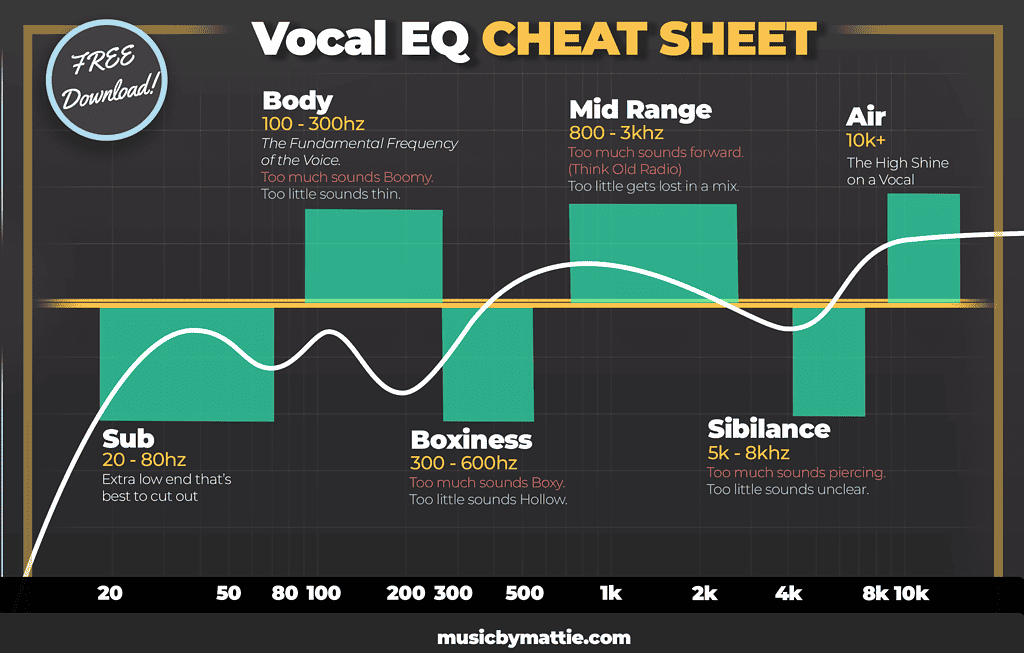
Download our FREE Vocal EQ Cheat Sheet!
Mattie
Post Info
Join "5 Beat Friday"
Every week you'll get 5 beats about the production world. Join the over 5,000+ other producers bettering themselves through 5 Beat Friday!

